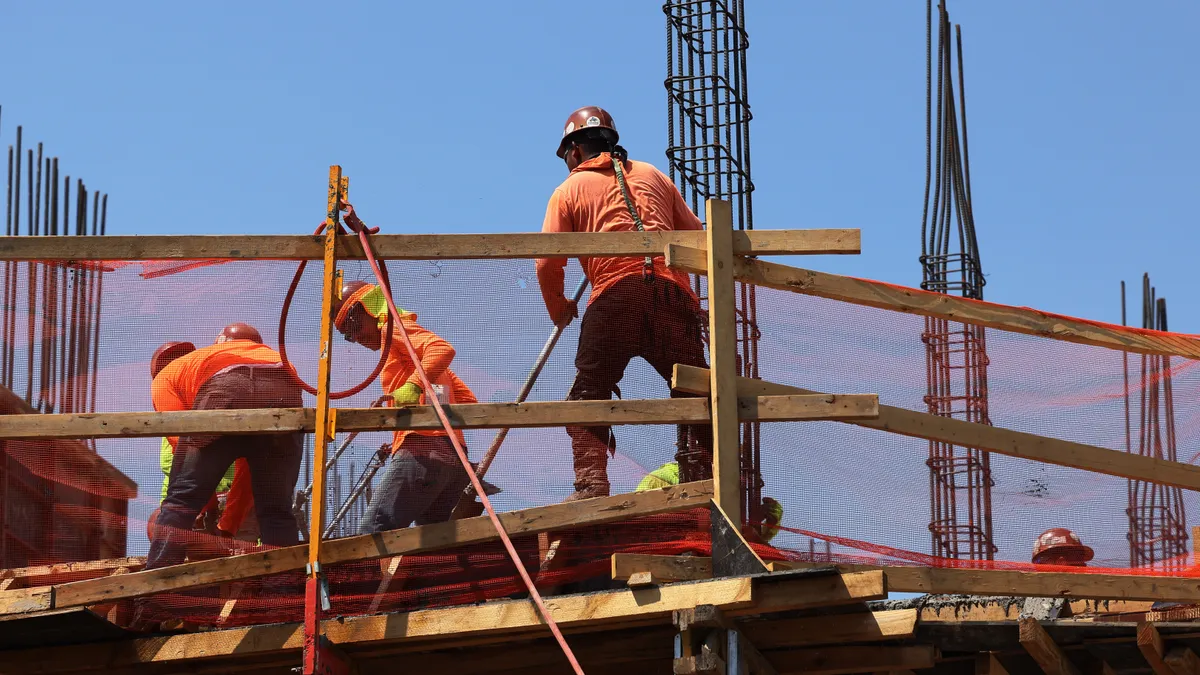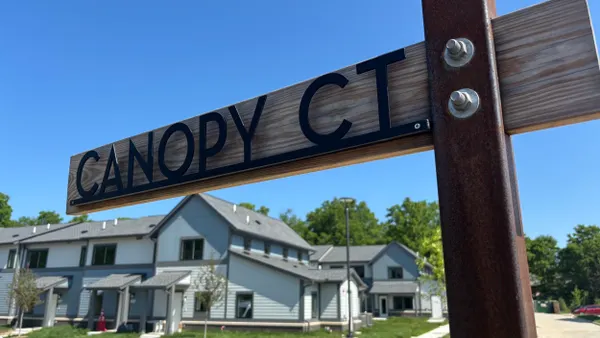Dive Brief:
- New York City could spark the production of roughly 300,000 additional new housing units over a decade by implementing certain policies to make it cheaper and easier to build, according to a new report from research group RAND Corp.
- The policy reforms the report highlights include allowing greater building density in strategic areas, streamlining building approval processes, reforming liability rules for construction sites and creating incentives for office-to-residential building conversions.
- “You can’t ever really increase long-term affordability if there’s much more demand than there is supply in terms of the housing stock,” said Jason Ward, a RAND economist and lead author of the report. “At some point, you have to increase production to be able to hit affordability goals.”
Dive Insight:
Like many U.S cities, New York has seen the cost of buying and renting a home surge to unprecedented levels in recent years and has seen a rise in homelessness among single adults, according to the report.
While the city has enacted policies aimed at providing affordable housing for low-income residents, the production of new housing units in New York has not kept pace with the growing demand to live in the city, contributing to the problem, the report states.
New York isn’t alone in this challenge. The federal government, as well as cities and states, have in recent years taken measures such as relaxing local zoning laws and removing other barriers to increase housing production.
The report analyzes the impact of policy reforms the researchers felt had the most potential to drive housing production, based on ideas from researchers and governmental and nongovernmental organizations and conversations with stakeholders, including local affordable housing developers, past and present city and state government officials and academics.
The policies the report identifies would increase the number of housing units produced in the city over the course of a decade by more than 160% compared with recent production trends, Ward said. That number, however, hinges on the state replacing a now-expired program that offered tax benefits for multifamily projects, the report says.
Policies that slow down approvals and timelines for housing development all tend to add project costs, Ward said. Extending the time it takes to complete a project adds financing costs or adds contingency costs, since there is a higher chance that unforeseen circumstances could scuttle the project in some way, creating uncertainty, Ward said.
One way to reduce financial uncertainty for builders is by reforming workplace liability policy that currently doubles insurance costs for New York state construction contractors, according to the report. “Unlike in most states, the law holds employers liable even when workers knowingly violate safety rules,” the report says, adding that financial awards from related lawsuits often stretch into the millions for individual cases.
Other policies that change zoning and land-use restrictions would allow increased housing density on more parcels throughout the city, Ward said. Relaxing density restrictions in areas that are within walking distance of subway and rail stations would generate the greatest number of additional housing units — 122,000 over a decade, the report states.
Increasing housing production alone is not going to solve the city’s affordability crisis, but it’s necessary to do so, Ward said. Other policies aimed at making housing affordable for low-income residents — such as rent control, housing vouchers, and requiring affordable units in market-rate developments — rely on an environment where a lot of housing can be produced, Ward said.
“You have to make an environment where it’s feasible and relatively easy to produce housing within a cost structure that makes sense,” said Ward.











